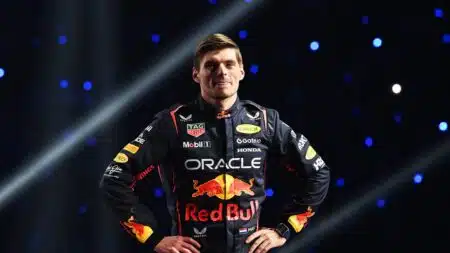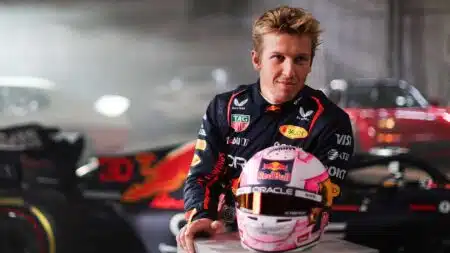
F1 snore-fest shows new cars badly needed: Up/Down Japanese GP
The 2025 Japanese GP showed a much more extreme change than next year's technical regulations is needed to make racing at classic F1 tracks interesting
The new Honda NSX has had a long gestation period, but that’s done little to diminish the excitement surrounding its arrival on the supercar market. Reviews have started to roll in and, perhaps naturally for a car laden with so much expectation the initial feedback has been mixed. While its outright performance and visual drama have received gold stars, there seems to be little enthusiasm for Honda’s latest halo project.
The original NSX was the quintessential Japanese supercar of the ‘90s. Ayrton Senna’s involvement with its development is well known and his notes helped Honda’s engineers refine the car into a classic. Equally, Senna’s lap of Suzuka at the wheel of an NSX R in 1992 has also played a role in the model’s enduring status.
With three cameras focused on the rev counter, pedal box and the Brazilian’s forward view, the video captures a car completely on its toes, responding perfectly to the champion’s inputs. It’s great viewing and makes you ponder why we don’t see more grand prix drivers let loose on their respective manufacturers’ machinery. Is there a more effective marketing tool than F1?
More than Senna’s sprinkling of fairy dust, there were other reasons for the original’s success. The term ‘everyday supercar’, or words to that effect, is now a common trope of motoring journalism. The NSX was a founding member of the useable supercar club, fulfilling Honda’s aim that even its range topper should exhibit the usability of a Civic. When the NSX was launched in 1990, no other mid-engined sports car could be enjoyed so regularly or exploited so fully.
Motor Sport reviewed the original NSX in November 1991
The model featured refined ergonomics, unobstructed forward views and a host of electronic niceties. It even offered users a feasible boot. Occasionally such features can be mistaken for an emotional bluntness in performance cars – the notion that something is too refined to provide the out-and-out thrills expected of such a machine.
The NSX didn’t defy this notion with rabid acceleration figures or extreme aesthetics, or even an underlying imbalance to unseat the uninitiated or unwary. Instead, it delivered those intangible attributes: feel, communication and trust. The NSX generated adrenaline through responsiveness and satisfaction rather than a lurking fear that something untoward might happen if you didn’t concentrate really, really hard.

Early reviews of the NSX referenced its handling feedback and accuracy, characteristics heightened by the car’s largely aluminium construction. While the 2015 variant adopts the latest in hybrid powertrain technology, the original was lighter; at 1370kg, the elder NSX weighs 356kg less than its newborn sibling.
The NSX’s naturally aspirated V6’s headline figures aren’t eye-popping, but it’s a quality engine. Electronic fuel injection was used in conjunction with variable valve timing (V-TEC) and Honda’s variable volume induction system (VVIS). These, combined with titanium conrods and other internal goodies, enabled sustained grunt from middle revs to the soaring 7800rpm limit.
This week’s spotlight is a beautifully preserved NSX from ’92. So successful was the model that production continued without major revision until 2005, though early models remain in high demand, particularly ones with such fresh legs – there are only 5949 miles on the clock. According to Silverstone Auctions even the leather smells new.
Supplied with a fresh MOT, the original toolkit and a major service from NSX specialists V-Tech Direct, lot number 336 takes the stage at the NEC Classic Motor Show on November 14/15.

The 2025 Japanese GP showed a much more extreme change than next year's technical regulations is needed to make racing at classic F1 tracks interesting

Max Verstappen looks set to be pitched into a hectic, high-stakes battle for F1 victories in 2025, between at least four teams. How will fans react if he resorts to his trademark strongman tactics?

Red Bull has a new team-mate for Max Verstappen in 2025 – punchy F1 firebrand Liam Lawson could finally be the raw racer it needs in the second seat

The 2024 F1 season was one of the wildest every seen, for on-track action and behind-the-scenes intrigue – James Elson predicts how 2025 could go even further